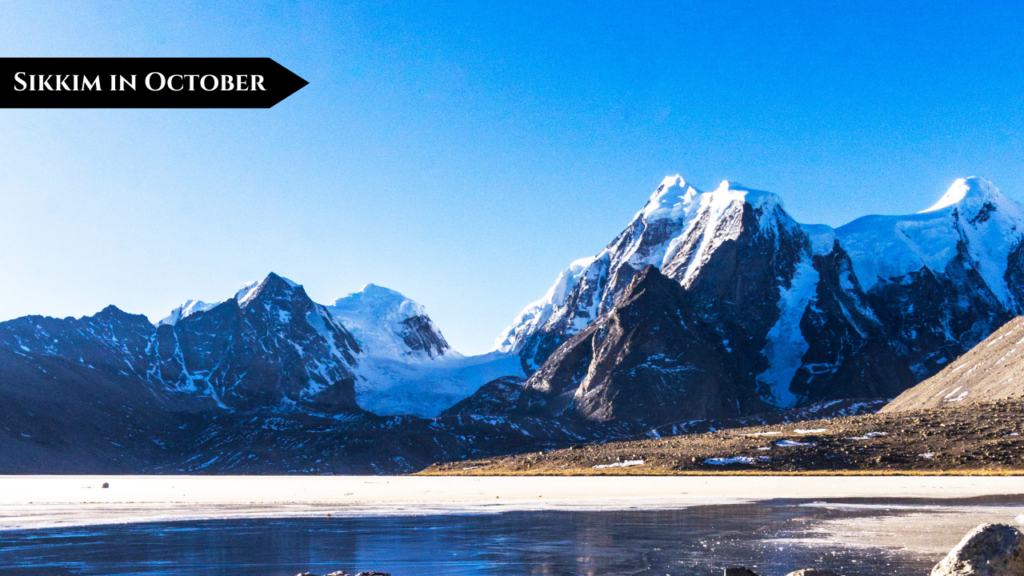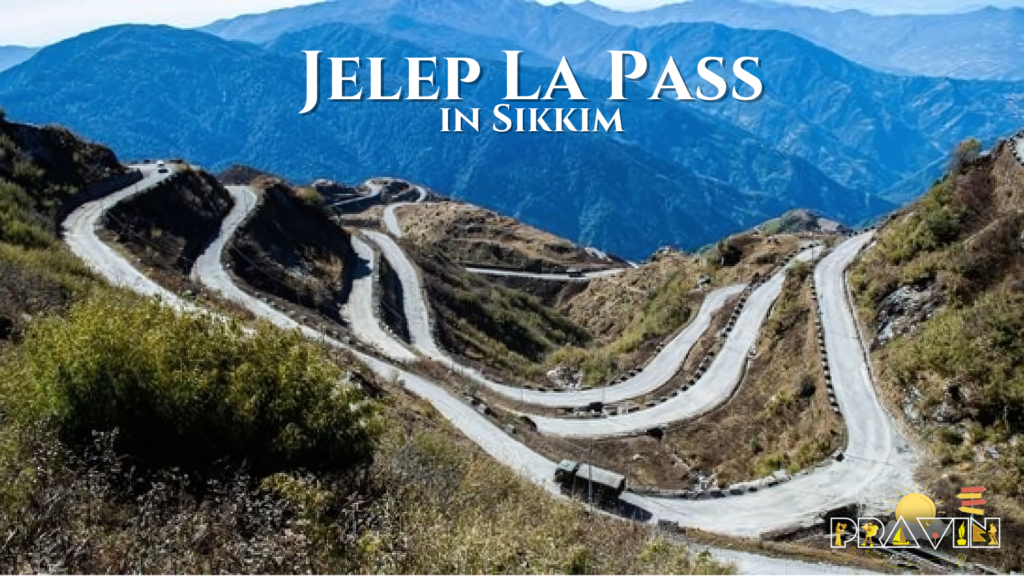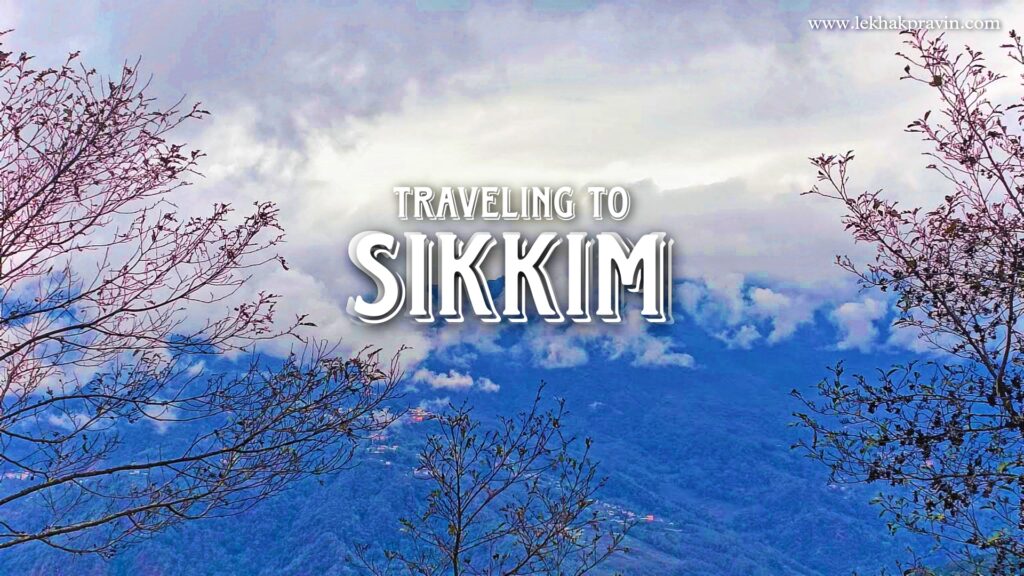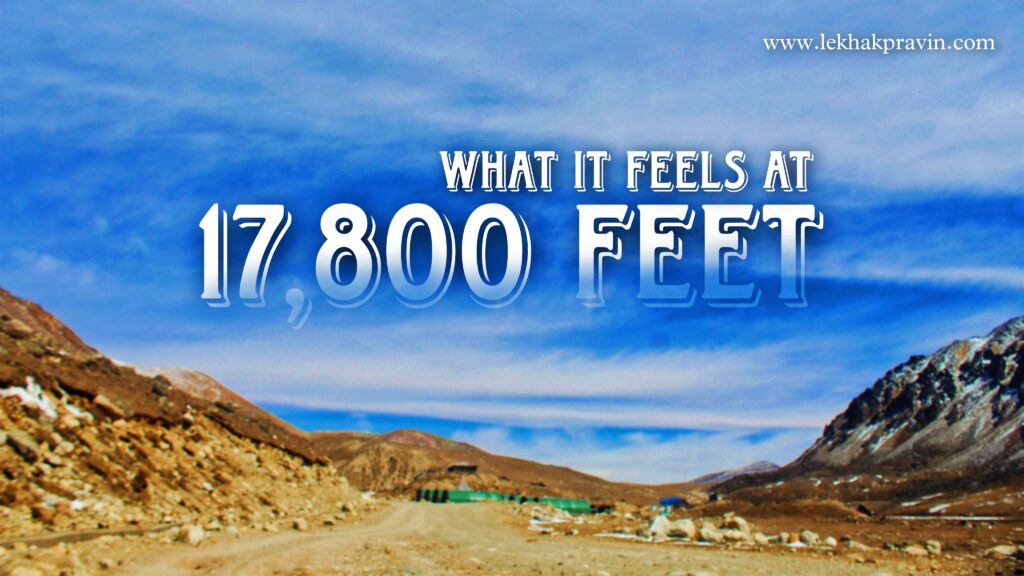Jelep La Pass in Sikkim is a high mountain pass located in the Indian state of Sikkim, part of the Himalayan mountain range. At an altitude of 13,999 feet (4,267 meters), it was historically a vital trade route between India and Tibet and now offers stunning views of the surrounding snow-capped mountains and valleys.
The pass is part of the old Silk Route and is now a significant tourist attraction, drawing visitors who are keen to witness the historical trade route, experience the unique culture of the region, and enjoy the breathtaking landscapes.
Significance of Jelep La Pass
Jelep La holds historical and economic significance. Historically, it was a major trading post on the Silk Route, facilitating trade between India and Tibet. Today, it remains a testament to the rich history of trade and cultural exchange in the region.

The pass is also of great interest to history buffs and those intrigued by the ancient trade routes that connected different parts of Asia. The stunning natural beauty surrounding the pass adds to its allure as a tourist destination.
Jelep La Pass Border Country
Jelep La Pass is located on the border between India and China, specifically between the Indian state of Sikkim and the Tibet Autonomous Region of China. The pass was a crucial point on the trade route between the two countries.
The pass is around 140 km from the capital city of Gangtok and is accessible by a scenic drive through winding mountain roads. On a clear day, you can witness the majestic peaks of the eastern Himalayas and imagine the vibrant trade activities that once took place here.
Jelep La Pass War History
While Jelep La itself did not play a direct role in military conflicts, the region around it has been strategically important. During the Sino-Indian War of 1962, the nearby Nathu La Pass was a significant flashpoint, and the area saw intense battles between the Indian and Chinese armies.
The history of the region adds to the intrigue and significance of Jelep La Pass, as it was once a vital artery for trade and cultural exchange between India and Tibet.
How to Reach Jelep La Pass
To reach Jelep La Pass, you need to travel to Gangtok, the capital of Sikkim. Gangtok is well-connected by road from Siliguri, which is approximately 114 km away. You can reach Siliguri by flight to Bagdogra airport or by train to New Jalpaiguri railway station.
From Gangtok, Jelep La is about 140 km and can be reached by a 4-5 hour drive. The route is scenic, passing through lush forests, rugged terrains, and offering glimpses of the majestic Himalayan peaks. It is important to note that permits may be required to visit Jelep La, and it’s best to check with local authorities for the latest regulations.
Best Time to Visit Jelep La Pass
The best time to visit Jelep La is from May to October when the weather is relatively mild and the roads are accessible. During these months, the skies are clear, providing stunning views of the surrounding mountains and valleys.

The winter months (November to April) see heavy snowfall, and the pass may be closed due to the harsh weather conditions. However, the snow-covered landscape during this time is equally mesmerizing for those who can brave the cold.
Jelep La Pass Height
Jelep La Pass is located at an altitude of 13,999 feet (4,267 meters) above sea level. This high altitude offers stunning views of the Himalayan range but also requires visitors to acclimatize properly to avoid altitude sickness.
Height of Jelep La Pass in feet is 13,999 feet.
Height of Jelep La Pass in meters is 4,267 meters.
My Experience of Jelep La Pass
Visiting Jelep La Pass was a remarkable experience. The journey from Gangtok through the winding roads was an adventure in itself, with stunning views of the mountains and valleys. The air became noticeably thinner as we ascended, and the temperature dropped significantly.
Reaching the pass, the sense of history was palpable. Imagining the ancient trade caravans traversing this route was awe-inspiring. The highlight was the stunning panoramic views of the snow-covered peaks and the rugged terrain, making it an unforgettable trip.
Things to Keep in Mind While Visiting Jelep La Pass
- Permits: Check with local authorities about permit requirements for visiting Jelep La Pass, as regulations may change.
- Acclimatization: The high altitude requires proper acclimatization. Spend a day or two in Gangtok before heading to Jelep La to adjust to the altitude.
- Weather: The weather can change rapidly. Dress in layers and carry warm clothing, even during the summer months.
- Physical Fitness: The high altitude and thin air can be challenging. Ensure you are physically fit and consult a doctor if you have any health concerns.
- Respect the Environment: Do not litter, and respect the local customs and traditions. The area is of significant historical and cultural importance.
History of Jelep La Pass
Jelep La Pass has been a vital trade route for centuries, linking India with Tibet. It was a key part of the ancient Silk Route, facilitating the exchange of goods, ideas, and cultures between the two regions.
The pass witnessed the passage of countless trade caravans over the centuries, carrying a variety of goods such as silk, spices, tea, and salt. The reopening of the pass for tourism has brought renewed interest in its rich history and cultural significance.
Conclusion
Jelep La is a must-visit for those interested in history, ancient trade routes, and breathtaking natural beauty. With its historical importance, stunning landscapes, and rich cultural heritage, it offers a unique and unforgettable experience.
If you are planning a trip to Sikkim, consider including Jelep La Pass in your itinerary. Prepare well, respect the environment and local customs, and enjoy the remarkable journey. The memories of this high-altitude adventure will stay with you for a lifetime!
FAQs Related to Jelep La Pass
1. What is the best time to visit Jelep La Pass?
The best time to visit Jelep La is from May to October when the weather is clear and the roads are accessible. During these months, the temperature is moderate, and you can enjoy stunning views of the surrounding mountains and valleys.
2. How high is Jelep La Pass?
Jelep La is located at an altitude of 13,999 feet (4,267 meters) above sea level. This high altitude means that the air is thinner and the temperature can be quite cold, even during the summer months.
3. How to reach Jelep La Pass?
Jelep La Pass can be reached from Gangtok, which is about 140 km away. To get to Gangtok, travelers can fly to Bagdogra airport or take a train to New Jalpaiguri railway station, both of which are located in Siliguri, West Bengal. From Siliguri, it is a 4-5 hour drive to Gangtok. Once in Gangtok, visitors can arrange transportation to Jelep La Pass.
4. What is the significance of Jelep La Pass?
Jelep La Pass holds historical and economic significance. Historically, it was a crucial part of the ancient Silk Route, facilitating trade between India and Tibet. Today, it serves as a testament to the rich history of trade and cultural exchange in the region.
5. Are there any accommodations available at Jelep La Pass?
There are no accommodations available at Jelep La Pass itself due to its remote location. Visitors usually stay in Gangtok, which has a wide range of accommodations, and make a day trip to Jelep La Pass.




